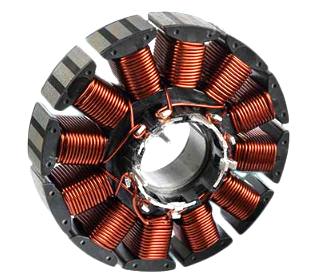What are the common control unit failures and solutions for brushless motor motor automatic stator in case machine?
Brushless motor motor automatic stator into the machine shell machine common control unit failure and solutions are as follows:
First, the controller failure
1、System crash or restart
Failure causes: poor heat dissipation of the controller, the internal temperature is too high due to prolonged operation, and the performance of electronic components decreases; the software program has loopholes or conflicts, errors in the implementation of complex tasks; unstable power supply, voltage fluctuations or instantaneous power outages.
Solution: Check whether the cooling fan of the controller is running normally, clean up the dust in the cooling channel to ensure a good cooling environment; contact the software provider to update the program, fix known vulnerabilities, or reinstall a stable version of the software; use a voltage regulator to ensure stable power supply, check whether the power line connection is firm.
2、Control commands are not executed
Failure causes: communication line failure between the controller and the actuator, such as line breaks, short circuits or poor contact; the controller's internal output interface is damaged, can not properly output control signals; parameter setting errors, resulting in the controller can not be correctly recognized and executed instructions.
Solution: Check the communication line, use a multimeter and other tools to measure the line through the breakage, repair or replace the damaged line; test the controller's output interface, if damaged, try to repair or replace the relevant circuit boards; double-check the parameter settings, in accordance with the requirements of the device specification for the correct settings.

Second, drive failure
1, the motor does not rotate or abnormal speed
Failure causes: abnormal power input of the drive, such as insufficient voltage or phase sequence error; loose or damaged connection lines between the drive and the motor; parameter settings of the drive and the motor does not match, such as current, frequency and other parameters set incorrectly.
Solution: Check the power input of the drive, use a voltmeter to measure whether the voltage is within the specified range, adjust the phase sequence; check the connection line to ensure that the connection is firm, no loose or damaged, replace the line if necessary; according to the specifications and requirements of the motor, reset the parameters of the drive.
2、Drive overheating alarm
Failure causes: the load of the drive is too large, exceeding its rated power; cooling fan failure, resulting in poor heat dissipation; drive the internal power module is damaged, generating too much heat.
Solution: Check the motor and mechanical transmission part, whether there is a stagnation or overload, reduce the load; check whether the cooling fan is running normally, clean up the dust on the fan and heat sink, if damaged, replace it in a timely manner; test the power module of the drive, if it is damaged, it is necessary to be repaired or replaced by professional personnel.
Third, relay failure
1、Contact sticking or not closed
Failure causes: frequent action of the relay for a long time, serious wear and tear of the contacts, resulting in sticking; the signal voltage of the control relay is unstable, too high or too low to affect the normal action of the contacts; the relay coil is damaged, can not produce enough magnetic force to make the contacts close.
Solution: Replace the badly worn relay; check the control signal voltage to ensure that it is stable within the rated operating voltage of the relay; use a multimeter to measure the resistance of the relay coil, if the resistance is abnormal, replace the coil or the entire relay.
2、Malfunction of relay
Reason: There is strong electromagnetic interference in the surrounding environment, which affects the normal operation of the relay; the installation position of the relay is unreasonable, close to the heat source or other sources of interference.
Solution: add shielding for the relay to reduce electromagnetic interference; adjust the installation position of the relay, away from the heat source and other equipment that may produce interference.
Fourth, the human-machine interface failure
1, touch unresponsive or abnormal display
Failure causes: touch screen surface stains, scratches or damage, affecting the touch sensing function; HMI driver is damaged or incompatible with the operating system; display screen backlight failure or damage to the LCD panel.
Solution: Use a clean soft cloth to clean the surface of the touch screen, if there are scratches or damage, consider replacing the touch screen; reinstall or update the driver of the human-machine interface to ensure compatibility with the operating system; check the backlight and LCD panel, if there is a failure, it is necessary to be repaired or replaced by a professional.
2、Data transmission error
Failure causes: communication line failure between HMI and controller, such as loose, broken or interfered lines; communication protocol setting error, resulting in data can not be correctly transmitted and parsed.
Solution: Check the communication line to make sure that it is firmly connected and shield the line to reduce interference; check the communication protocol settings to make sure that the HMI and controller use the same protocol and parameters.
※ If you still can't solve the problem by the above ways and means, please contact the technical specialists of Xinhui Mechanical & Electrical Equipment Co.







